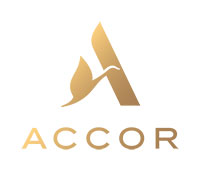Cabo Sao Roque Resort Outlines Sustainable Development Operating Approach
|
Cabo Sao Roque Resort Outlines Sustainable Development Operating Approach
|
Category: Central and South America
This is a press release selected by our editorial committee and published online for free on 2008-02-21
Resort In Full Compliance With Brazilian Zoning and Environmental Ordinances; Incorporates Unique Village-Style, Low-Rise Profile
Resort officials at Cabo Sao Roque today announced additional details regarding the resort's sustainable development operating approach. Resort executives developed the master plan incorporating sustainable development objectives during the two years (2005-2007) spent working through the application process that involved careful analysis of the project by Brazilian government agencies responsible for zoning, environmental affairs and tourism development regulation.
Prior to the January 29, 2008 official announcement of the resort, all necessary permits from the Institute of Economical Development and Environment (IDEMA) were approved to move forward with the project which includes three hotels, 1,350 private vacation residences and an array of sport and leisure facilities. Resort officials will continue to submit all future projects, such as hotel architectural plans, for government approval as well.
"We are committed to engaging in sustainable development and environmentally sound operating practices that will allow our world-class destination resort to co-exist harmoniously with the land and neighboring municipalities," stated Torben Frantzen, President of Brazil Development Investimentos Turistocos Ltda (BDIT), developer of Cabo Sao Roque. "We're proud of the supportive comments we continue to receive from Brazilian government planning and tourism authorities as well as the positive international interest which the announcement of Cabo Sao Roque has garnered. Everyone involved with the resort team is looking forward to showcasing the beauty and culture of Brazil."
Contrary to erroneous reporting by news organizations, to date there has been not one single protester, nor any comments of concern submitted, or face-to-face meeting requests made by any bona fide environmental organization to express complaint about the master resort plan for Cabo Sao Roque. The Cabo Sao Roque resort is located within a coconut plantation, situated 32 kilometers (20 miles) north of Natal, the state capital of Rio Grande do Norte that is not part of any UNESCO preserve or property. Previous and inaccurate articles have confused the location of the resort with an ecological reserve located in Southern Brazil.
Mr. Frantzen has worked extensively with noted master planning architect and Brazilian native Andre Sa to situate resort amenities throughout the extensive acreage to maintain a village-style, low-rise skyline profile. Mr. Frantzen also sought early input, and continues to work with a group of Brazilian environmental advisors as well as international environmental watchdog groups that have allowed the resort to start engaging in responsible practices from the very beginning of the planning process.
Resort officials have indexed the flora and fauna found within the property boundaries. All landscaping will utilize and conserve all native trees and plants found within the resort grounds.
The 14 million square meters (3,500 acres) resort site incorporates sand dunes often associated with Rio Grande do Norte and Natal. The site also features a river, freshwater lakes, lagoons and cliff side areas that will be preserved as outlined in the approved master plan. No construction will take place on the sand dunes which are protected by Brazilian federal law, and no permission was ever requested to do so. Phase One of the master plan will develop resort facilities on approximately six to eight percent of the total land mass, unlike many resorts in the region that have developed buildings and facilities up to 40% of their total land mass.
The sporting facilities announced in late January including The David Beckham World of Sport and The Rubens Barrichello Driving Experience will both incorporate scholarship programs for deserving Brazilian youth.
BDIT will also be making sustainable development investments in the infrastructure and residents of the adjacent municipalities including construction of a hospital, a new school equipped with computers and books, and bring language, sports specialists and hospitality industry/food service instructors to the region to train area residents for future job openings in and around the resort compound.
|
|




